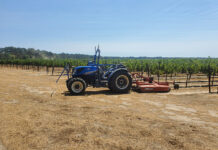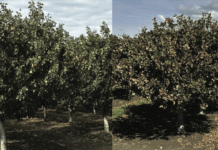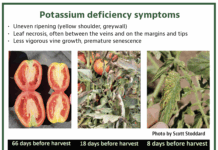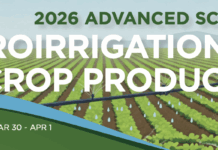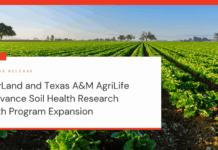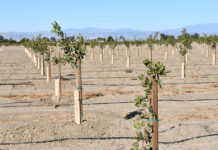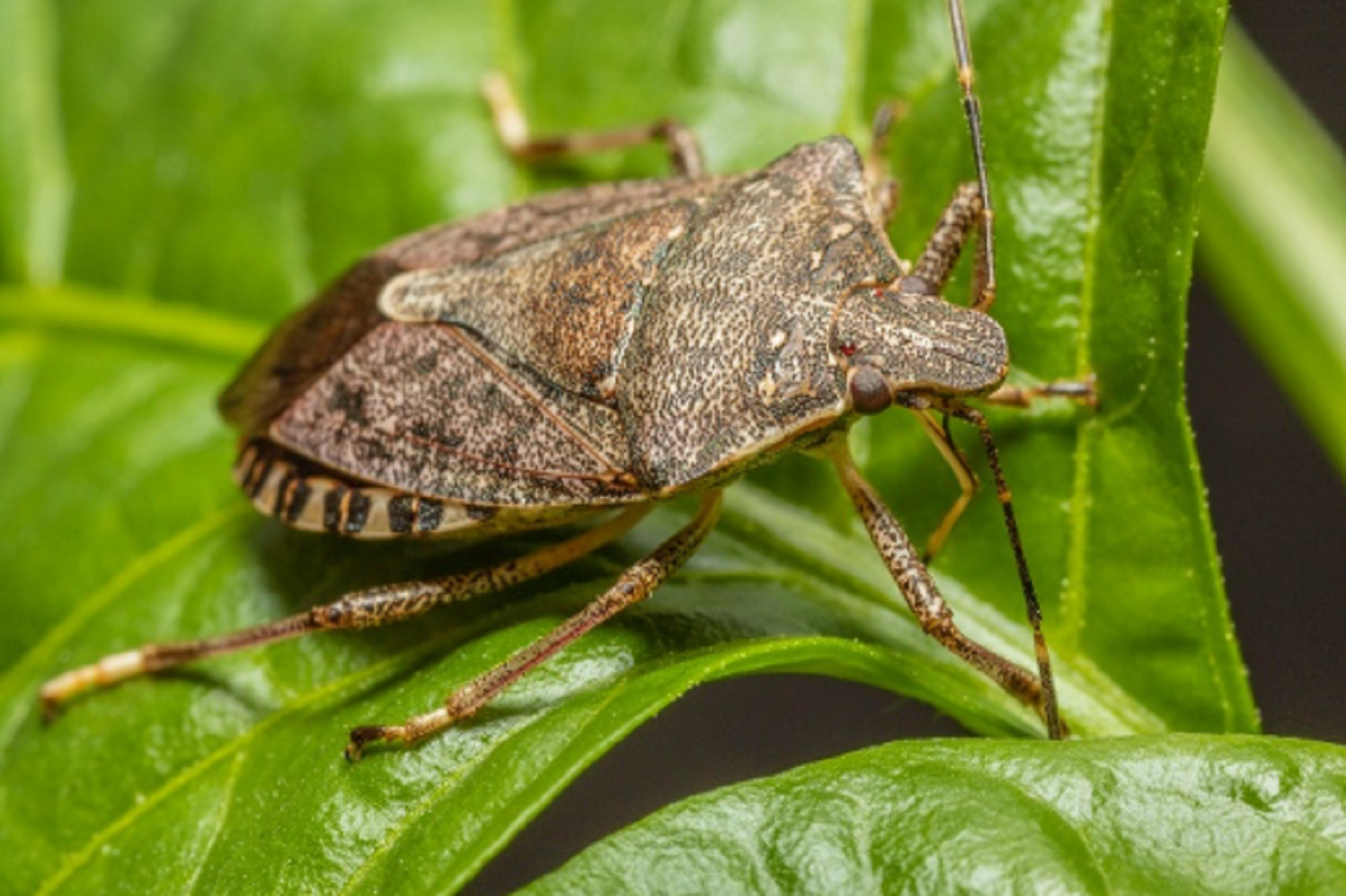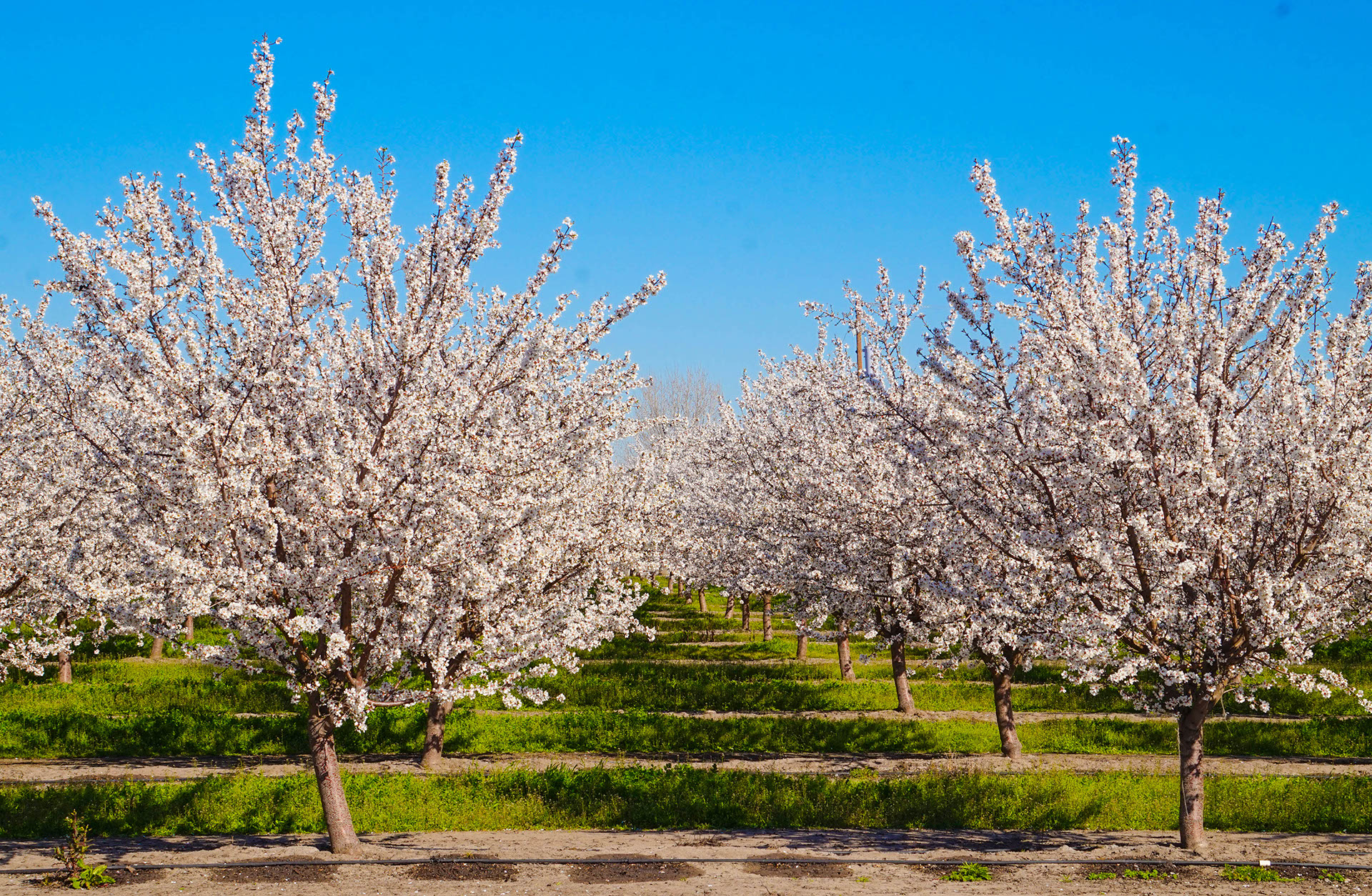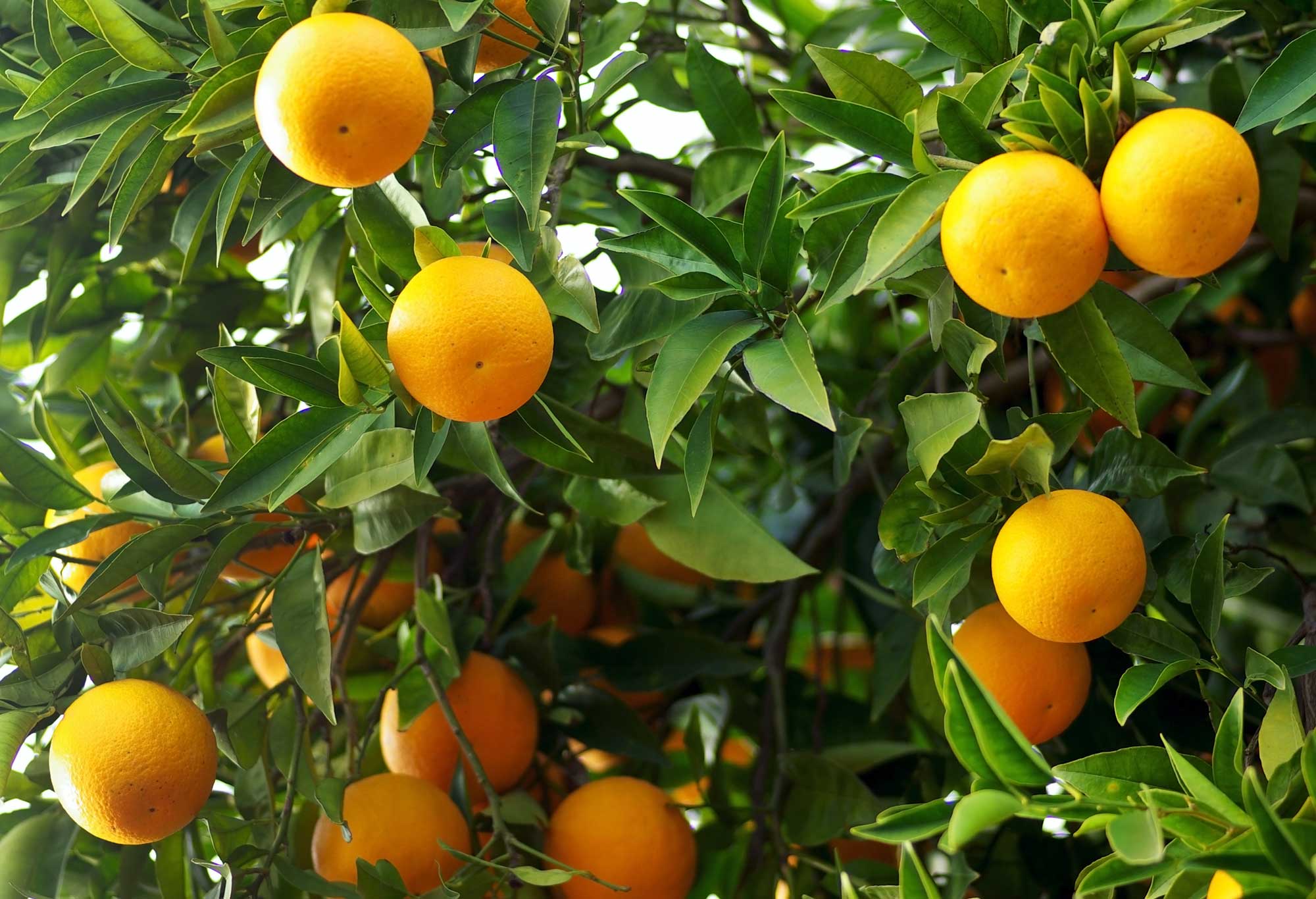
Listen to the audio version of this article (generated by A.I.)
Research on grafted watermelons in California has entered its seventh year since 2019. As adoption grows in acreage, economic gains and yield advantage, there is a need to review the development of watermelon grafting research, consider emerging issues and offer reliable production guidance to those new to this practice. The goal is to support long-term sustainability and viability of watermelon production in California.
Grafted watermelon acreage in California is about 2,500 acres in the 2024 season, 15 times more than in 2019. Many people are surprised and ask, “Why has acreage grown so fast? And why watermelon rather than tomato, given that tomatoes are more familiar in grafting contexts?” The answers are multifaceted.
First, watermelon fields use far fewer plants per acre than tomato (fresh market or processing), which lowers the cost of grafted transplants. Second, rootstock seed for watermelon is cheaper than that for tomato. Third, watermelon is a higher-value crop compared to tomatoes, especially processing tomatoes. Lower transplant cost, cheaper rootstock seed and higher grower returns combine to form a clear pathway to profitability for grafted watermelons. The table below compares cost categories for grafted watermelon vs processing tomato.
We divided the development of watermelon grafting research into four overlapping phases.

Phase 1: Identify Optimal Growing Practices for Grafted Watermelons, Spacing (2019-21)
Because the high cost of grafted transplants is a key barrier to adoption in commercial systems, we prioritized reducing plant density while maintaining yield and quality. From 2019 to 2021, on-farm experiments evaluated multiple in-row spacings (3, 4, 5 and 6 feet) for full-size grafted watermelons (Fig. 1). An in-row spacing of 4.5 feet became the industry standard. At that spacing, each acre needs only 1,400 plants, 35% fewer than in nongrafted production, without a drop in yield. We also performed economic analyses illustrating when growers achieve profitability under each spacing (Wang and Fulford 2021).
Phase 2: Understand Rootstock Characteristics and Field Performance (2021-25)
After identifying optimal spacing, we responded to grower needs by screening rootstocks and scions suited to California’s conditions. Since 2021, on-farm trials have tested combinations of rootstocks and scions across commercial fields. More than 10 interspecific hybrid squash, citron and bottle gourd rootstocks were evaluated for yield, fruit quality and cost. Simultaneously, scion varieties differing in maturity, rind traits and shape were grafted onto locally popular rootstocks to test compatibility, yield, fruit quality and marketability. The two tables below summarize key characteristics of three rootstock types and their field performance, along with examples of rootstocks available from U.S. companies (Tables 2 and 3). For the full list of cucurbit rootstocks (including non-U.S.), see vegetablegrafting.org/resources/rootstock-tables/cucurbit-rootstocks/.
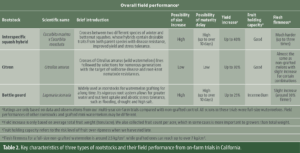
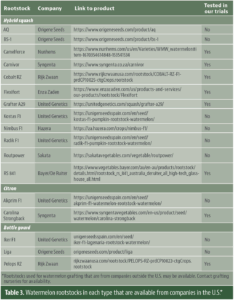
Phase 3: Nitrogen and Irrigation Demand for Grafted Watermelons (2021-25)
As rootstock and scion combinations began showing yield and quality advantages, growers explored how irrigation and nutrient, especially nitrogen, application should change for grafted watermelons given their differing growth patterns. The consecutive years of drought in California’s Central Valley have made irrigation management more challenging. Using smart irrigation tools allows growers to apply water based on actual crop needs. Since 2021, we have conducted on-farm experiments using the online decision-support tool CropManage to guide sustainable irrigation and N management for grafted watermelon with backing from the National Watermelon Association (Wang et al. 2024). We observed distinct N uptake patterns in grafted vs nongrafted plants, indicating the need to adjust applications to maintain productivity (Wang and Fulford 2022).
In the 2024 field trial, plant tissue nitrate declined sharply from June 20 to July 18 for both grafted and nongrafted plants. This was a sign of nitrate translocation from vegetative tissue to fruit. During that period, plants slowed nitrate uptake, resulting in either slight rises or steady soil nitrate levels. However, soil nitrate in nongrafted plots rose sharply, indicating accumulation from fertigation inputs. After July 18, continual N fertilization intended to promote vine regrowth and fruiting led to slight increases in tissue nitrate in grafted plants, with soil nitrate either rising or holding steady. Nongrafted vines, having entered senescence, showed decreasing tissue nitrate content.
For canopy coverage, which is key to estimating crop coefficient and evapotranspiration (ET), vines grew rapidly early. After the first harvest (July 10, 2024), canopy coverage fell, then recovered slowly and leveled off later. Grafted plant canopies (CAM and COB) followed that pattern. Nongrafted plot canopies declined most sharply and were the lowest through August 2024. Consequently, growers should understand how grafted watermelons use nutrients and water and tailor applications to their higher post-grafting vigor.
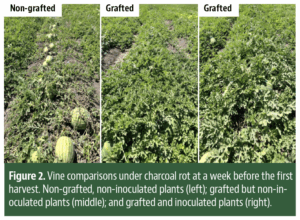
Phase 4: Grafting as a Tool to Enable Other Sustainable Practices (2022-25)
Although subsurface drip irrigation is widely used for watermelon in California and the region’s dry growing season suppresses some soilborne pathogens, such as fusarium and verticillium wilt, other diseases like charcoal rot (Macrophomina phaseolina) pose risk under hot dry conditions. Rising fumigation costs and restricted pesticide use have spurred interest in combining grafting with biological control. Since 2022, we have collaborated with the California Department of Pesticide Regulation to test combinations of grafting and Trichoderma biofungicides to reduce dependence on soil fumigants while maintaining yield and plant health. We compared application methods (tray drenching vs soil chemigation), Trichoderma formulations, rootstock choices and their interactions. We observed yield benefits from using Trichoderma and rootstocks both individually and synergistically (Buojaylah and Wang 2024; Buojaylah et al. 2024). Grafting and drenching with Trichoderma effectively managed charcoal rot (Fig. 5). These results support grafting as a reliable way to prevent vine decline and boost yield, and they inform best practices for biofungicide use. The research favors applying Trichoderma in the nursery to maximize microbial colonization and efficacy. Many vegetable growers are beginning to adopt that method as a routine practice.
Looking Ahead: Questions to Be Answered
• How can we accurately estimate fruit maturity delay after grafting? As more rootstocks become commercialized, predicting maturity and any delay becomes more complex. A grafted fruit may remain immature even when classical indicators such as tendril, vine and rind suggest maturity.
• What is the pathogen load threshold beyond which rootstock effects are negated? That remains hard to determine since rootstock choice, grafted plant vigor and abiotic stress all influence disease resistance. We have seen grafted plants afflicted with symptoms of Fusarium wilt and other soilborne pathogens.
• How should we strategically select pollenizers? The interactions among pollenizers, rootstocks and scions and their effects on fruit maturity and quality remain less understood.
• Can grafting work equally well on other types of watermelon? We are beginning to explore whether grafting mini watermelons or specialty types such as yellow-flesh yields results comparable to full-size red-flesh varieties.
References
Wang, Z., and Fulford, A. (2021). Is there a pathway to profitability for grafted watermelon? Vegetables West. 25, 8-10 https://vegetableswest.com/2021/09/01/read-september-october-2021-issue/.
Wang, Z., and Fulford, A. (2022). Nitrogen fertilization for grafted & non-grafted watermelons: Case study demonstrates different yield response. Vegetables West. 25, 10-12 https://vegetableswest.com/2022/09/01/read-sept-oct-2022-issue/.
Buojaylah, F., and Wang, Z. (2024). Two-year summary: Impacts of grafting and Trichoderma biofungicide on watermelon productivity and plant health. The Adviser-CAPCA. 27, 42-46 https://capca.com/wp-content/uploads/2024/03/CAPCA_ADV_APR-2024_LowRes.pdf.
Buojaylah, F., Castrejon, Y., and Wang, Z. (2024). Evaluating Trichoderma-containing biofungicide and grafting for productivity and plant health of triploid seedless watermelon in California’s commercial production. HortScience. 59, 1709-1717. https://doi.org/10.21273/HORTSCI18048-24.
Wang, Z., Cahn, M., and Buojaylah, F. (2024). Application of CropManage for processing tomato and watermelon production in the northern San Joaquin Valley. Progressive Crop Consultant. 9, 28-33 http://publications.myaglife.com/books/qjqd/#p=1.



